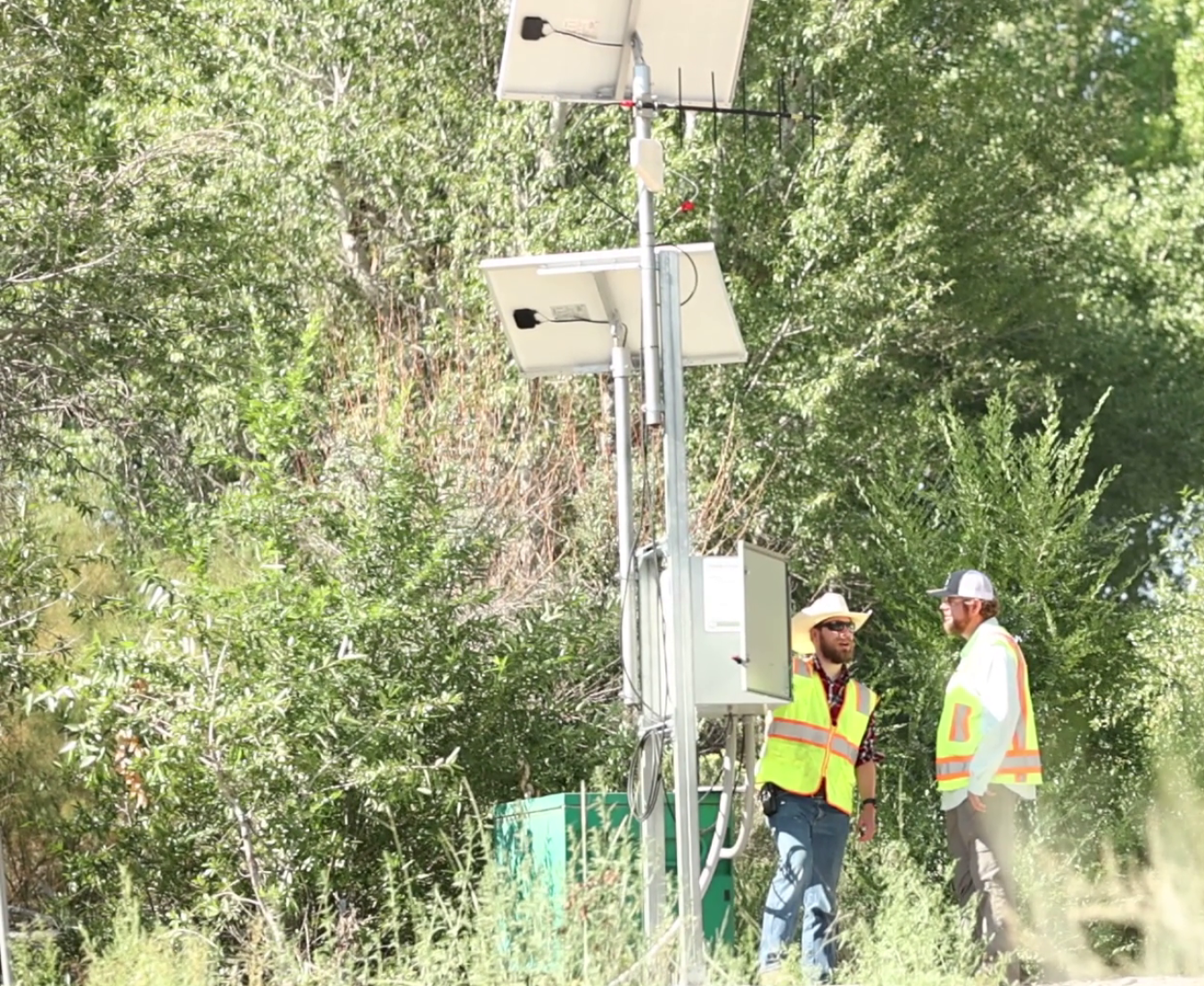A real-time streamflow gaging station resulting from a collaboration involving the EM Los Alamos Field Office (EM-LA) was recently installed to enable Buckman Direct Diversion (BDD) staff to decide whether to cease diverting water from the Rio Grande.
Office of Environmental Management
September 6, 2022
Russell Lyon and John Mumm, with one of Newport News Nuclear BWXT-Los Alamos’s subcontractors, Tech2 Solutions, inspect a new streamflow gaging station recently installed at the confluence of Los Alamos Canyon and the Rio Grande. The gaging station transmits flow and no-flow information to the Buckman Direct Diversion’s Operations Center and the Pueblo de San Ildefonso.
LOS ALAMOS, N.M. – A real-time streamflow gaging station resulting from a collaboration involving the EM Los Alamos Field Office (EM-LA) was recently installed to enable Buckman Direct Diversion (BDD) staff to decide whether to cease diverting water from the Rio Grande based on water flow from the Los Alamos and Pueblo canyons.
BDD diverts water from the Rio Grande for use by the City of Santa Fe and Santa Fe County. The BDD water supply intake on the Rio Grande is downstream of where water flow from the Los Alamos and Pueblo canyons enters the Rio Grande.
The gaging station, which was installed on Pueblo de San Ildefonso land at the confluence of Los Alamos Canyon and the Rio Grande, transmits flow and no-flow information to the BDD Operations Center and the Pueblo de San Ildefonso. In addition to a flow notification signal, visual images are uploaded every five minutes, providing a secondary verification flow.
EM-LA and its cleanup contractor, Newport News Nuclear BWXT-Los Alamos (N3B), worked closely with BDD and the Pueblo de San Ildefonso to develop the project.
“The overall objective of N3B’s Water Program is to protect water quality in Los Alamos and the surrounding areas,” said Loren Bryant, an N3B project manager. “The gaging station is designed to monitor streamflow migrating from Los Alamos Canyon, off Los Alamos National Laboratory (LANL) property, and potentially emptying into the Rio Grande.”
Other structures exist in Los Alamos and Pueblo canyons to reduce the transport of sediment before stormwater reaches the Rio Grande. N3B also has 57 automated samplers within Los Alamos and Pueblo canyons at sites potentially impacted by LANL legacy operations. Stormwater samples are collected at these sites when rainfall reaches a certain threshold.
If contaminant exceedances are detected in samples, N3B performs corrective actions, such as the construction of stormwater controls. Controls include earthen berms and rock check dams to catch sediment as it moves down the canyon in runoff.
N3B’s soil remediation program is also investigating and remediating soil contamination in excess of state standards in Los Alamos Canyon.
“Cleaning up the environment around LANL and protecting the water quality is personally important to me because I work up here, I’m from here and my kids go to school here,” Bryant said. “I want to make sure Los Alamos and neighboring communities are a safe environment for many years to come.”
N3B is the primary contractor to EM-LA, tasked with investigating legacy sites from LANL’s Manhattan Project and Cold War operations and addressing environmental impacts resulting from these operations.
To receive the latest news and updates about the Office of Environmental Management, submit your e-mail address.

